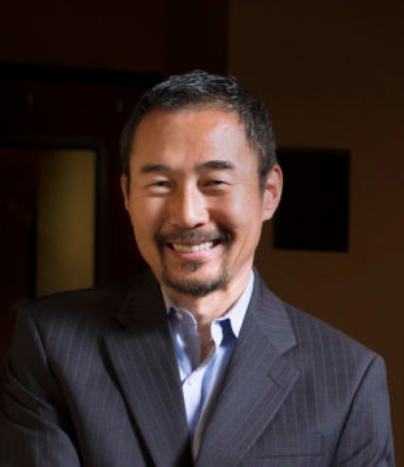The Riddle of Cancer Development
Could a new understanding of epigenetics move us toward a cure?
Image credit: Storyblocks
by Rob Leigh
June 21, 2023
When my uncle Ron was diagnosed with leukemia, it was a death sentence for him. He went from an easygoing prankster to a grinch. Who could blame him? For many cancers, like my uncle’s leukemia, there is still no cure, and early detection remains elusive. But thanks to epigenetics, a growing branch of genetics research focused on factors that influence how cells interpret DNA instructions, there’s reason for cautious optimism that we could soon understand the riddle of cancer development.
Epigenetics, a term coined by 20th century British biologist Conrad Waddington, means “above genetics.” It describes how gene expression, switching genes on or off, can be controlled by factors that change how cells read DNA. These factors, unlike mutations, do not change the underlying sequence of the DNA letters. Epigenetic changes can arise naturally during fetal development or through environmental influences. Such elements include temperature, environmental toxins, and many other conditions. In some cases, the resulting changes in gene expression can be inherited.
For example, Waddington’s 1953 experiments on fruit flies showed that a gap in one of the wing veins developed in some flies when 21-to-25-hour-old fly pupae were exposed to a temperature of 104 degrees Fahrenheit for two hours. Selectively breeding flies with a gap in the wing vein produced some offspring with these characteristics, even though they were not exposed to the same temperature. Further selective breeding produced a higher proportion of offspring with this trait.
“Scientists estimate that 70% to 80% of cancers (possibly higher) are considered ‘sporadic,’ meaning they have no known cause.”
The study of epigenetics has advanced greatly since the 1950s. And the enigma of how epigenetic processes impact cancer development is a life-or-death question. Recent discoveries of how cancer genes are controlled may enable early tumor discovery or predict who is predisposed to cancers. Epigenetics might even lead to cures when paired with emerging therapies like stem cells.
In fact, cancer cells become more malleable and adaptable as they develop, unlike normal cells. This is partly due to random epigenetic changes, argue the authors of a 2023 review in Science. By studying these changes, researchers could discover cancers’ key characteristics and specific treatment targets. This is promising. And epigenetic therapies for cancers like leukemia are among the most studied because of their potential to treat leukemias with fewer side effects than conventional chemotherapy.
One source of hope is the universality of epigenetic changes in cancer. All human cancers display epigenetic changes. Epigenetics’ role is more evident in the origin of some common cancers, such as breast or colon cancer subtypes.
Often, what seems unknowable becomes clear as research advances. Scientists estimate that 70% to 80% of cancers (possibly higher) are considered “sporadic,” meaning they have no known cause. Another killer, tuberculosis, was once thought to have no known cause but is now well understood. Similarly, epigenetic manifestations of cancers will likely become unambiguous in the future. Just as Waddington manipulated temperature to change fruit fly traits, other epigenetic factors — more subtle ones — may be manipulated to alter the emergence and progression of cancer, which would revolutionize its treatment and cure.
Cancer is actually a group of diverse conditions with dissimilar origins and behaviors. Using the term “cancer” is akin to grouping all bad actors in society, such as gang members, bank robbers, or cybercriminals simply as “bad guys.” They are all bad, but each is unique, with a distinct modus operandi.
“Gene expression in cells is controlled by a myriad of factors at the transcriptional level, epigenetic level, and/or the translational level,” said Yogita Jethmalani, Ph.D., an epigeneticist and stem cell researcher at the National Center for Advancing Translational Sciences, part of the National Institutes of Health. “Cancer is a complex disease… [with] more than one factor responsible for the diseased state.”
Cancer development and epigenetics
For context, three key processes control gene expression: copying of a gene from the DNA to a messenger RNA, or mRNA (transcription); production of proteins from copied instructions in mRNA (translation); and changes that control which genes in the DNA are available for transcription and translation and which are not (epigenetic alterations).
Certain cancers have oncogenes, or genes that promote tumors. “Onco” means tumor in Latin, and “cancer” means crab. The Greek terms “carcinos” and “carcinoma,” which refer to tumors resembling crabs, were first introduced by Hippocrates. All cancers are tumors, but not all tumors are cancers. Unlike malignant tumors, benign tumors do not behave uncontrollably, and tumor suppressor genes prevent oncogenes from manifesting. It is a balancing act: good guys against bad guys.
Image credit: Tara Holley for The Science Writer
“Recent developments in molecular biology have taken the detection and study of epigenetic determinants of cancer to the next level,” said Shweta Kukreja, Ph.D., a cancer biologist and epigeneticist at Dana-Farber Cancer Institute at Harvard Medical School. “It is now possible to work on very little amounts of sample and get highly reliable data on the epigenetic changes in human tissue that accompany certain cancer types,” she said. According to Kukreja, new technology helps scientists study individual cells within a tumor at different stages and understand the molecular basis behind cancer.
Could epigenetic switches turn off oncogenes and turn on tumor suppressor genes? The addition of chemical structures such as methyl groups — three hydrogen atoms attached to one carbon atom — to DNA masks parts of the genetic sequence, blocking gene expression, or suppressing certain genetic traits from developing, making them inaccessible. Conversely, adding acetyl groups — two carbons, one oxygen, and three hydrogens — to histones, molecules that arrange the DNA in specific ways, does the opposite; it makes stretches of genes accessible and allows for their expression. Controlling mechanisms, like methyl groups for suppression or acetyl groups for expression, cause the same DNA to be read in infinite ways. It is comparable to turning the light switch on or off or varying the dimmer’s intensity.
Using stem cells to modify cancerous epigenetic changes
Because the human body contains up to a few hundred cell types and subtypes, each capable of manifesting a different type of cancer, understanding the life cycle of a specific cancer cell starts with understanding how the cell formed in the first place. After all, the aggregation of cells that make up a human body (or any animal) originates from a single cell: the fertilized egg. That’s where stem cells come in.
What are stem cells? Consider Johnny Depp, an actor who has played diverse roles: Edward in Edward Scissorhands, Captain Jack Sparrow in Pirates of the Caribbean, Barnabas in Dark Shadows. Although the same person, he appears as a completely different figure in each role. Likewise, cells in different bodily organs have identical genetic information, but they play distinct roles in each organ. Most cells have gone far in the differentiation process, meaning they’re committed to a particular role. However, a few original cells — stem cells — remain in our body, not yet differentiated and capable of giving rise to any cell type. Stem cells are unspecialized, like the actor at home, awaiting the next role.
Epigenetic factors, which control the expression of certain genes and the concealment of others, make diversification from stem cells possible. All cell types in our body still possess the same genetic material, or DNA, but they are vastly different in morphology, function, and metabolism. Take, for example, the nerve cells. There are a few major subtypes, and together they make up your brain, spinal cord, and nerve fibers responsible for the bidirectional flow of information. Similarly, your bone cells form a stiff matrix — the scaffolding that supports your body. Ditto for liver cells, heart cells, and skin cells. All share the same DNA, and all originated from the same stem cells, but epigenetic factors made them different.
Once we know more about how epigenetic processes influence cancer development, stem cells could be harnessed to control those factors. “Stem cells can be used in cell therapy as a source of new differentiated cells,” said Jethmalani. “Stem cells can also be used as vectors for delivering suicide-inducing genes to cancer cells. The advantage of this approach is that only cancerous cells are eliminated and not healthy cells.” The flip side, added Jethmalani, is that these “genetically edited stem cells can become carcinogenic.” In other words, the good guys can go rogue.
In leukemias like Uncle Ron’s, traditional chemotherapy kills the cancer cells but also the healthy cells. Stem cells help repopulate the cell line with healthy cells. Most cancer treatments fall short of this ideal, but that is the goal of epigenetic therapies. Scientists have known since at least 2015 that mutations to epigenetic factors can lead to the development of leukemia in mice. Understanding the molecular basis of each step in this transformation will help researchers zero in on the precise areas where cancerous metamorphoses occur, potentially finding ways to halt and even reverse the process.
Studies have shown that adding epigenetic inhibitors to standard chemotherapy has significant potential to radically change cancer treatment. Epigenetic therapies have the potential to improve cancer treatment by reducing resistance to cancer therapy agents.
Gene expression is finely regulated in normal human cells. “Since aberrant modifications usually precede or accompany tumor development and metastasis, it is possible to study the epigenome of a person and determine their chances to develop cancer,” said Kukreja. She explained that mutations are used to determine the risk of cancer; preliminary results show promise in using epigenetic signatures of individuals as predictors of cancer risk.
Stem cell therapy has the potential to play a crucial role in the treatment of cancers like leukemias, where the study of epigenetics assumes greater significance. Ongoing research is paving the way to a broader application against other cancers. Breathtaking advancements in cellular reprogramming — such as using epigenetic factors to change the complexion of a cell — are unfolding in our view. Gaining a better understanding of epigenetics could enable researchers to decipher how cancers originate, which is critical to finding cures for many cancers, including my late uncle’s leukemia.
Rob Leigh
Rob Leigh is a physician and writer based in Scottsdale, Arizona. He has written about health for various trade and online publications and has been featured on local news programs and their websites. Rob is passionate about breakthrough medical technologies such as gene therapy, epigenetics, astrophysics and space exploration, global warming, the environment, and nature. He is working to finish his first novel, a futuristic medical thriller.
Senior Editor: Armi Rowe
Art Editor: Tara Holley
Copy Editor: Christopher Graber











